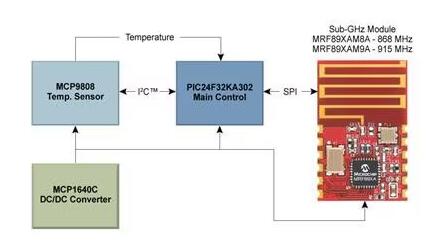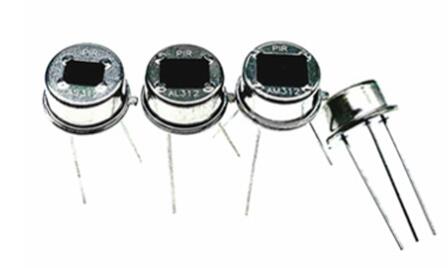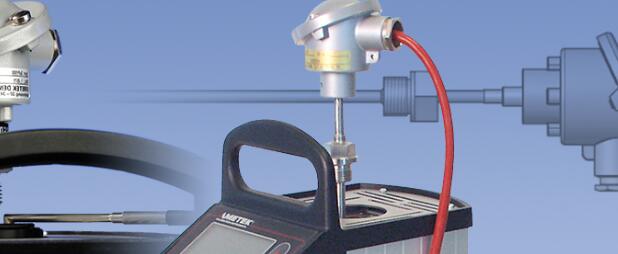Resistance temperature detector (RTD)
RTD is typically made of platinum, copper, or nickel. The resistance temperature relationship of these metals is shown in the figure. They have a large temperature coefficient, respond quickly with temperature changes, can resist thermal fatigue, and are easy to manufacture into precision coils.
RTD is currently the most accurate and stable temperature sensor. Its linearity is superior to thermocouples and thermistors. But RTD is also a temperature sensor with slow response speed and relatively expensive price. Therefore, RTD is most suitable for applications that have strict requirements for accuracy, but speed and price are not very critical.
#P # IC Temperature Sensor # e#
Application of Resistance Temperature Detectors (RTDs)
Resistance temperature detectors are widely used in nuclear power plants to measure temperature. The temperature measurement principle of RTD is that the resistance of pure metals or certain alloys increases with increasing temperature and decreases with decreasing temperature. Therefore, RTD is somewhat like a thermoelectric converter, converting temperature changes into voltage changes. The most suitable metal for RTD use is pure metal that remains stable within a given temperature range. The relationship between resistance and temperature change is best linear, with a larger temperature coefficient (defined as the change in resistance per unit temperature) being better, and it should be able to resist thermal fatigue and respond sensitively to temperature changes. Only a few metals can meet this requirement.
IC temperature sensor
(1) Simulated integrated temperature sensor
Integrated sensors are made using silicon semiconductor integration technology, hence also known as silicon sensors or single-chip integrated temperature sensors. The analog integrated temperature sensor was introduced in the 1980s. It is a specialized IC that integrates temperature sensors on a single chip and can perform temperature measurement and analog signal output functions. The main characteristics of analog integrated temperature sensors are single function (only measuring temperature), small temperature measurement error, low price, fast response speed, long transmission distance, small volume, micro power consumption, etc. They are suitable for long-distance temperature measurement and control without the need for nonlinear calibration, and the peripheral circuit is simple. An integrated sensor that is still widely used both domestically and internationally, AN6701, an IC temperature sensor with high sensitivity and precision, is introduced below.
The schematic diagram of AN6701 is shown in the following figure, which consists of three parts: temperature detection circuit, temperature compensation circuit, and buffer amplifier.
The detection circuit of the IC temperature sensor works by utilizing the principle of the voltage difference (VbC) between the base and emitter caused by the current density difference between the two emitters in a transistor. The following diagram shows the temperature detection and temperature compensation circuit diagram. In the above figure, T1-T5 is the detection circuit, and the circuit composed of T8-T11 and RC generates a current proportional to its absolute temperature. This current is injected into T7 through T12 and T13 to obtain the compensation temperature corresponding to the injected current. RC is an external resistor, making the calibration of the sensor more convenient.
(2) Digital output sensor
Digital temperature sensors were introduced in the mid-1990s. It is the crystallization of microelectronics technology, computer technology, and automatic testing technology (ATE). At present, various intelligent temperature sensor series products have been developed internationally. Intelligent temperature sensors all contain temperature sensors, A/D converters, signal processors, memory (or registers), and interface circuits. Some products also come with a multiplexer, central controller (CPU), random access memory (RAM), and read-only memory (ROM). The characteristic of intelligent temperature sensors is that they can output temperature data and related temperature control variables, and are compatible with various microcontrollers (MCUs); And it achieves testing functions through software on the basis of hardware, and its intelligence and harmony also depend on the level of software development.













